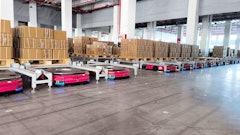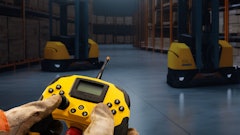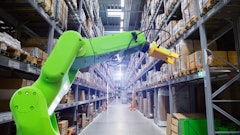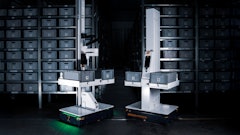
Warehouse automation has long been associated with increasing efficiency, reducing errors, and accelerating operational speed. However, one of its most transformative impacts is the redefinition of workforce roles. Instead of replacing employees, robotics is enhancing their roles, elevating them to take on more strategic, data-driven positions.
This shift underscores how warehouse employees, once focused on manual stock checks and inventory reconciliation, can now leverage data insights to optimize workflows and drive better decision-making.
Here's how real-time data from autonomous systems is empowering warehouse colleagues to optimize workflows, anticipate challenges, and enhance supply chain performance. By embracing this evolution, warehouses are not only improving productivity but also creating a more skilled, future-ready workforce.
Unlocking warehouse efficiency with data
Warehouses have always been data-centric environments, but accessing real-time insights has historically been a challenge. Many facilities still rely on labor-intensive methods like manual stock checks and cycle counting, which are both time-consuming and error-prone. According to a recent study, inventory inaccuracies cost retailers worldwide approximately $1.1 trillion annually, highlighting the need for more precise solutions.
With automation, real-time inventory tracking has become a reality. Autonomous mobile robots (AMRs) and automated storage and retrieval systems (AS/RS) continuously scan shelves, track stock levels, and provide instant visibility into inventory, order fulfillment rates, and warehouse space utilization. This influx of accurate, real-time data empowers employees with insights they never had before, allowing them to anticipate challenges, optimize processes, and make more informed decisions.
From hands-on work to data-driven decisions
A typical warehouse colleague’s day has evolved dramatically with automation. Previously, employees would spend hours navigating aisles, scanning barcodes, and resolving inventory discrepancies. Now, with robots handling these repetitive tasks, warehouse personnel are enabled to shift their focus to analytics and operational improvements.
Instead of reacting to inventory shortages, warehouse colleagues are predicting demand trends. Rather than searching for misplaced items, they are analyzing patterns to prevent losses and optimize storage. This evolution makes warehouse jobs more engaging, valuable, and future-proof.
The power of real-time data
Access to continuous data streams is revolutionizing warehouse management. Traditionally, inventory control relied on periodic cycle counts and outdated reports. Today, with real-time automation, businesses can do a multitude of actions including identifying fast-moving vs. slow-moving inventory, monitoring stock levels instantly, improving decision-making through predictive analytics and reducing order fulfillment errors, and optimizing warehouse layout for maximum efficiency.
By leveraging this wealth of information, employees are no longer bogged down by mundane, repetitive tasks. Instead, they are becoming key decision-makers who directly impact supply chain performance.
Humans and robots: A smarter warehouse team
The future of warehousing isn’t about replacing human workers—it’s about enhancing their capabilities. Robotics takes on the physically demanding and time-consuming tasks, while human employees bring critical thinking, problem-solving skills, and operational expertise to the table.
A report from the Material Handling Institute (MHI) found that 79% of supply chain professionals believe robotics and automation will create new job opportunities rather than eliminate them. These new roles will focus on process optimization, predictive analysis, and managing the technology that powers automated systems.
Equipping warehouse colleagues for the next era of warehousing
As automation adoption grows, investing in workforce upskilling will be crucial. Companies must implement training programs that teach employees how to interpret and act on data insights. Having access to vast amounts of information is only valuable if workers know how to leverage it effectively.
Forward-thinking warehouses are already adapting by integrating learning platforms and data literacy programs to ensure their teams are equipped with the skills needed to thrive in an automated environment.
Conclusion
The rise of robotics in warehousing isn’t a story of job loss, it’s a story of job evolution. As machines handle the heavy lifting, employees are transitioning into roles that emphasize data-driven decision-making and strategic analysis.
This evolution marks a new chapter in logistics, where the synergy between human intelligence and robotic efficiency is reshaping the industry. The next generation of warehouse staff may not be traditional data analysts, but they are undoubtedly more data-savvy than ever before.
For supply chain leaders, the message is clear: investing in both automation and workforce development will be the key to staying competitive in the rapidly evolving world of logistics.





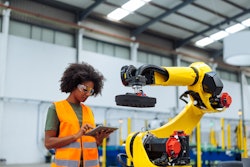
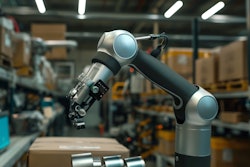






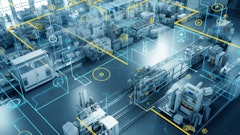
![Pros To Know 2026 [color]](https://img.sdcexec.com/mindful/acbm/workspaces/default/uploads/2025/08/prostoknow-2026-color.mduFvhpgMk.png?ar=16%3A9&auto=format%2Ccompress&bg=fff&fill-color=fff&fit=fill&h=135&q=70&w=240)
